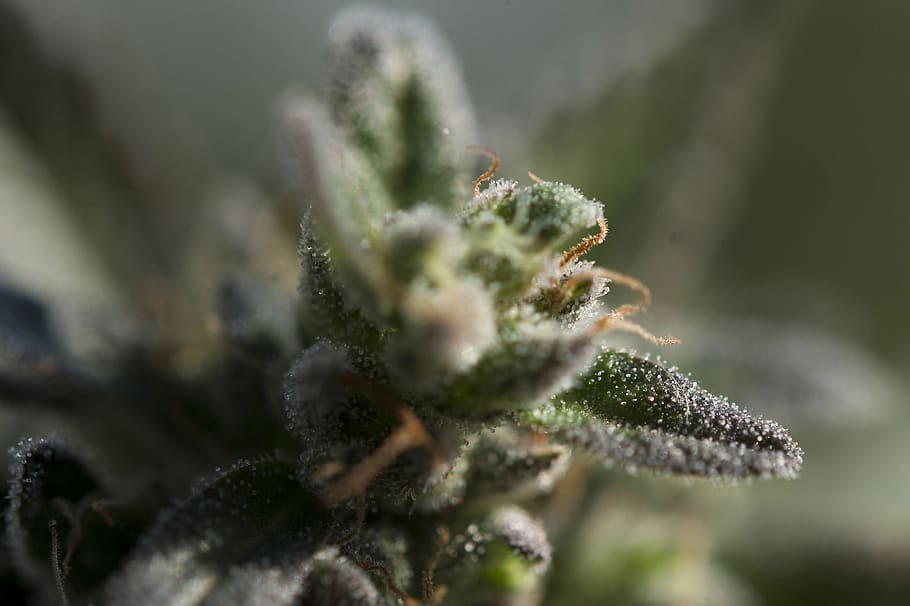Trichome Production & Carbohydrate Supplementation

Understanding Cannabis Trichomes
Trichomes are small, hair-like structures found on the surface of cannabis plants (Cannabis sativa, Cannabis indica, and Cannabis ruderalis). These trichomes serve various functions and are particularly important in the context of cannabis cultivation and consumption.
Resin Production
Because trichomes are an essential part of resin production and THC potency, many growers benefit by supplementing carbohydrates with products like Future Harvest's Carbo Blast, to provide their crops with additional reserves of sugars that bypass the photosynthetic process with readily available energy reserves. Here is an explanation of the roles trichomes play regarding cannabis:
Production of Cannabinoids
Trichomes are the primary site for producing cannabinoids, which are chemical compounds unique to cannabis plants. The most well-known cannabinoids include THC (tetrahydrocannabinol) and CBD (cannabidiol). THC is responsible for the psychoactive effects of cannabis, while CBD is non-psychoactive and has potential therapeutic benefits.
Resin Production
Trichomes contain a resinous secretion that covers the plant's surface. This resin helps protect the plant from various threats, including insects, UV radiation, and environmental stressors. Carbo Blast supplementation helps produce these essential plant functions to allow a plant to focus its energy on flower production.
Trichome Types
There are several types of trichomes on cannabis plants, but the three main types are glandular trichomes, bulbous trichomes, and capitate-sessile trichomes. The glandular trichomes are the most important for cannabinoid production, and they appear as small, mushroom-shaped structures.
Potency
The concentration of cannabinoids is particularly high in the resin-producing glandular trichomes. Therefore, the higher the density of trichomes on a cannabis plant, the more potent it is likely to be.
Appearance
Trichomes are often visible to the naked eye, giving mature cannabis buds a frosty or crystalline appearance. This is especially true when the plant is close to harvest.
Harvest Timing
Cannabis growers often pay close attention to the trichomes' appearance to determine the ideal time for harvesting. As the plant matures, the trichomes change color. Clear trichomes indicate an early harvest, while cloudy or amber trichomes suggest a later harvest, with varying effects and flavors.
Consumption
When cannabis is harvested, dried, and cured, the trichomes remain on the plant material. When the dried cannabis is smoked, vaporized, or used in other forms of consumption, the trichomes release the cannabinoids and terpenes responsible for the plant's effects and flavors.

Carbohydrates and Their Influence on Trichome Production
Plants, including cannabis, is a subject of great interest in horticulture and cultivation. Carbohydrates, like those found in Carbo Blast, are essential nutrients that provide energy for various cellular processes in plants, and they can potentially influence trichome development. Though the direct impact of carbohydrate supplementation on trichome production may depend on several factors. Here is what we know:
Role of Carbohydrates
Carbohydrates are a primary source of energy in plants. During photosynthesis, plants produce glucose, which is then converted into various carbohydrates, such as sucrose and starch. These carbohydrates are essential for the growth, development, and metabolic processes of the plant.
Trichomes and Metabolism
Trichome development is a metabolically demanding process for the plant. Trichomes contain specialized cells that synthesize and store various compounds, including cannabinoids and terpenes. These biosynthetic processes require energy, which is primarily supplied by carbohydrates.
Indirect Influence
Carbohydrate supplementation can indirectly impact trichome production by promoting overall plant health and vigor. When plants have sufficient carbohydrates available, they can allocate more resources to secondary metabolite production, including the compounds found in trichomes. Healthy and robust plants tend to have better trichome development.
Optimal Nutrition
While carbohydrates are essential, it is important to note that they are just one aspect of a plant's nutritional requirements. For optimal trichome production, cannabis plants (or any other plant) need a balanced and comprehensive nutrient regimen that includes essential macronutrients (nitrogen, phosphorus, potassium) and micronutrients (such as iron, magnesium, and calcium) in addition to carbohydrates.
Genetics and Environment
Trichome production is influenced by genetic factors specific to each cannabis strain or plant variety. Additionally, environmental factors such as light intensity, temperature, humidity, and nutrient availability also play a significant role in determining trichome development.
Providing a well-balanced nutrient regimen, alongside Carbo Blast, will contribute to overall plant vigor, potentially supporting trichome development as part of the plant's natural growth processes. Growers should focus on providing optimal nutrition and creating an environment conducive to healthy plant growth to encourage trichome development.

Environmental Impact on Trichomes and the Boost from Carbohydrates
Stress and Trichome Production
Environmental stressors, such as varying light cycles, extreme temperatures, or inconsistent watering, can influence trichome production. In many plants, trichomes form as a defense mechanism against these external threats. When a cannabis plant is mildly stressed, it might produce more trichomes as a protective response. However, it is a delicate balance – too much stress can hinder overall plant health and reduce yields.
Carbo Blast to the Rescue
In such stressful conditions, providing an immediate energy source like Carbo Blast can be immensely beneficial. With the extra energy reserved from carbohydrates, plants can better manage stress, ensuring that trichome production is not compromised. It is like giving an athlete a carbohydrate gel during a marathon; it offers a quick energy boost when needed most.
Enhancing Light Absorption
Light is a critical factor for trichome development. With the energy from Carbo Blast, plants can optimize their photosynthesis process, translating to better light absorption and utilization. This enhanced light absorption can further stimulate trichome production, especially in the flowering phase.
Regulating Temperature and Humidity
Trichomes also help the cannabis plant manage heat and moisture loss. In hotter conditions, trichomes can reflect excess light, protecting the plant's tissues. Here again, Carbo Blast's energy can aid the plant in maintaining its internal processes, ensuring it remains robust and continues trichome production even when external conditions are less than ideal.
Environmental factors play a pivotal role in trichome production. By understanding these influences and supporting plants with carbohydrate supplementation, growers can ensure a rich trichome yield, leading to more potent and aromatic cannabis harvests.

